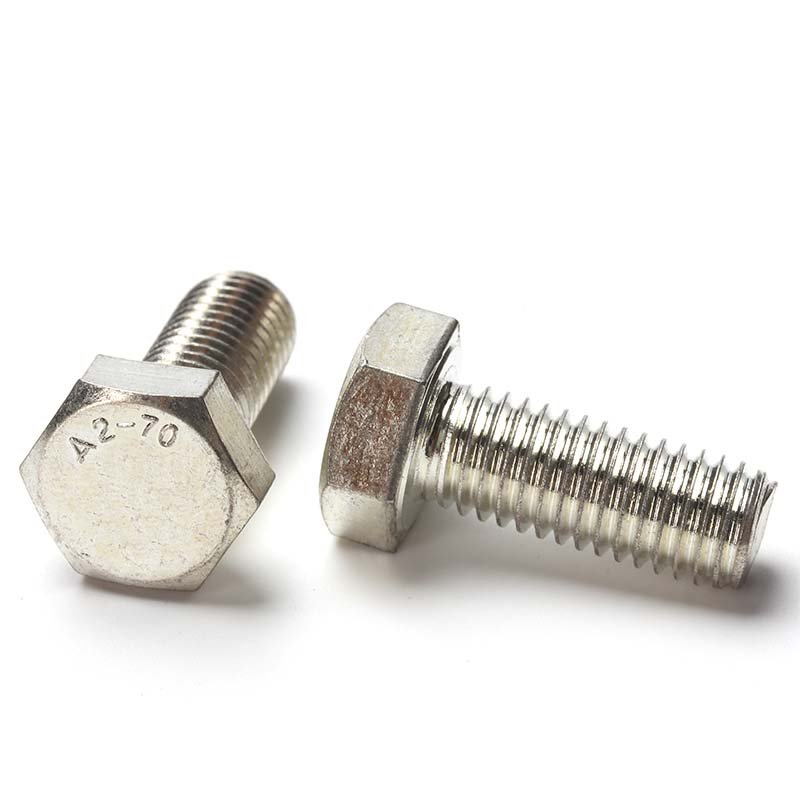Tin Plating for Stainless Steel Fasteners
Tin Plating for Stainless Steel Fasteners
Stainless steel fasteners benefit significantly from surface treatments like tin plating, which enhances their performance in demanding environments. Tin plating (Sn plating) has become a well-regarded technique in the fastener industry, particularly for increasing corrosion resistance, improving electrical conductivity, and adding aesthetic value. In this article, we explore the full scope of tin plating as a surface treatment for stainless steel fasteners, from technical background to real-world applications.
What is Tin Plating? Overview of the Surface Treatment Method
Definition
Tin plating is an electrochemical process in which a thin layer of tin is deposited onto the surface of metal fasteners. The main goal is to provide a corrosion-resistant and conductive surface. The process typically involves electrolytic or electroless deposition techniques to achieve a uniform layer of tin.
Technical Background
Tin plating has a long-standing history in the electronics and hardware industry due to its solderability and corrosion resistance. In the fastener sector, it has evolved with the advancement of electroplating technologies and is now a standard treatment for stainless steel components. It remains one of the most economical and widely-used surface treatments for specialized fasteners.
Common Uses and Scope of Application for Tin-Plated Stainless Steel Fasteners
| Fastener Types | Industries Using Tin Plating |
|---|---|
| Bolts, Nuts | Automotive, Aerospace |
| Washers | Electronics, Telecommunications |
| Screws, Self-tapping Screws | Consumer Electronics, Energy Sector |
| Threaded Rods | Construction, Machinery |
Stainless steel fasteners with tin plating are particularly suited for applications requiring electrical contact, corrosion resistance, and aesthetic finish. Due to tin’s malleability and non-toxic profile, they’re also ideal for food-grade and medical equipment.
Performance Characteristics of Tin Plated Stainless Fasteners
Corrosion Resistance
Tin has excellent resistance to atmospheric corrosion, humidity, and salt spray. It acts as a sacrificial layer, protecting the stainless steel underneath.
Appearance and Surface Finish
Tin plating produces a bright silver-white surface that is attractive, uniform, and smooth. The coating is low-friction and resists surface oxidation.
Hardness and Abrasion Resistance
Although tin is a soft metal, it can be alloyed or processed to achieve moderate wear resistance. It won’t greatly increase hardness, but it maintains the base mechanical properties of the stainless steel.
Conductivity and Insulation
One of the main advantages of tin plating is its excellent electrical conductivity. This makes it an ideal choice for electrically conductive fasteners used in electronics and telecommunications.
Tin Plating Process for Stainless Steel Fasteners
Preparation Steps
- Degreasing to remove oils and machining fluids
- Acid cleaning or pickling to eliminate oxide layers
- Rinsing to neutralize and clean the surface
Plating Steps
- Electrolytic deposition of tin using a stannous salt solution (typically tin sulfate or tin chloride)
- Controlled current and bath temperature to achieve desired thickness (commonly 5-20 μm)
Post-treatment Process
- Rinsing to remove residual chemicals
- Baking or drying to stabilize the plating
- Optional passivation or sealing for enhanced durability
Advantages and Limitations of Tin Plating
Benefits
- Excellent corrosion protection especially when combined with stainless steel
- High solderability for electronic applications
- Non-toxic and RoHS compliant, making it suitable for food and medical use
- Good appearance and surface finish
- Compatible with other coatings for hybrid treatments
Drawbacks
- Softer finish compared to other hard coatings like nickel or zinc
- May not provide sufficient wear resistance for high-load applications
- Requires precise process control to avoid whisker formation in electrical applications
Tin Plating vs Other Surface Treatments
| Feature | Tin Plating | Zinc Plating | Black Oxide |
|---|---|---|---|
| Corrosion Resistance | High (especially in marine or humid environments) | Moderate | Low |
| Electrical Conductivity | Excellent | Poor | Poor |
| Solderability | Excellent | Poor | Poor |
| Aesthetic Appearance | Bright and shiny | Matte Grey or Blueish | Matte Black |
| Cost Effectiveness | Moderate | Low | Very Low |
Applicable Standards and Certifications
Tin plating operations often conform to international quality and environmental standards such as:
- ISO 2093 – Electroplated coatings of tin
- ASTM B545 – Electrodeposited Coatings of Tin
- RoHS Directive – Restriction of Hazardous Substances in materials
These certifications ensure that tin-plated stainless steel fasteners meet industry norms for safety, environmental concerns, and performance.
Summary and Company Expertise
We, at Flybear Fastener, take pride in delivering high-performance surface-treated stainless steel fasteners that meet diverse industry demands. Our tin plating services ensure superior corrosion resistance and electrical conductivity for your electronic, mechanical, and construction needs.
Flybear’s wide range of fastener products includes tin-plated bolts, nuts, screws, and customized solutions that deliver exceptional reliability even in the most demanding conditions.
We stay committed to “Quality First, Customer Foremost” as the foundation of our operations and offer industry solutions that balance cost and performance.
For tailored component recommendations, technical consultations, and project-specific pricing, please contact us today.








